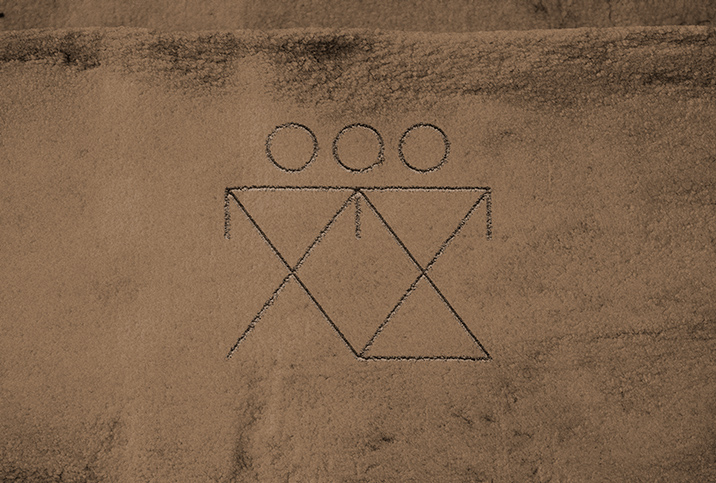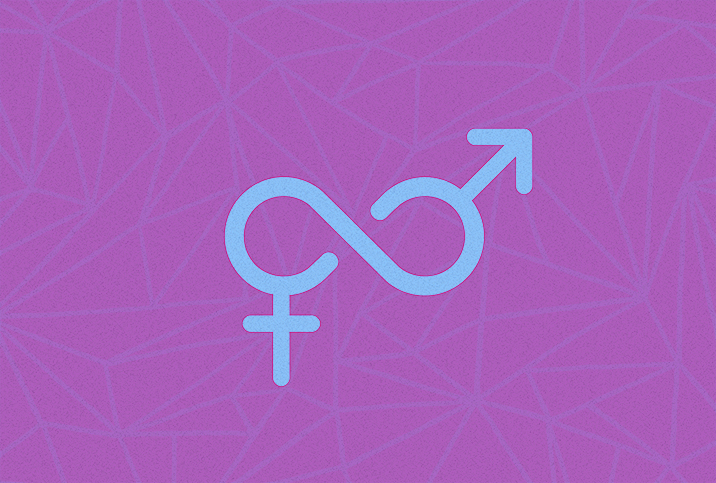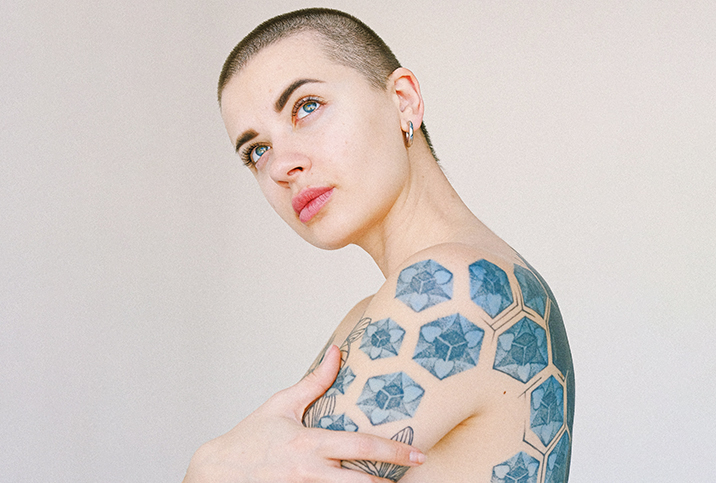A Brief History of Nonbinary Identities Around the World

Anyone who has followed pop culture over the past few years has likely heard the term "nonbinary" crop up more and more in recent times. Celebrities like Miley Cyrus, Demi Lovato and Sam Smith have publicly proclaimed their nonbinary identities over the past decade, and a 2021 study by the Williams Institute at UCLA School of Law found that 1.2 million Americans (mostly people under 29) identified as nonbinary. But even though the growing mainstream acceptance of nonbinary people (and the Twitter bios listing "they/them" pronouns) may be new, identities that fall in between or outside of "male" and "female" have existed in many different cultures well into ancient times.
Nonbinary people's earliest ancestors
One of the earliest mentions of such people in history was in ancient Buddhist texts that refer to a group of people called pandaka. The exact meaning of this term has been debated, but it's thought to refer to intersex people (those with ambiguous genitalia), eunuchs or effeminate gay men. It also may have been used to describe those who identified outside the gender binary, according to Leah DeVun, associate professor and vice chair for undergraduate education in history at Rutgers University. One old text quotes a monk labeled as a pandaka as saying, "I go both ways. I am neither man nor woman."
Ancient Greek and Roman texts and artwork from around the same time, as far back as the fourth century B.C., refer to a god called Hermaphroditus who was both male and female. This figure is the basis of the word "hermaphrodite"—an outdated term for an intersex person—though this is different from nonbinary identity, which describes how people self-identify rather than what genitalia they have. In Plato's "Symposium," he wrote that humans started off as creatures with two heads and two sets of arms and legs, and then were split in half by the angry Zeus. Before this splitting, there were three kinds of beings: those consisting of two male bodies, two female bodies and one of each.
Binary-defying characters aren't limited to these ancient cultures. In early interpretations of the Bible, some Christian writers posited that Adam began as a nonbinary individual, then split off into a man and woman. Others theorized that Jesus had male and female traits in a way that might be called nonbinary today, said DeVun. "Gender categories beyond the binary haven't always been rejected — sometimes they've been celebrated and idealized."
Gender categories beyond the binary haven't always been rejected — sometimes they've been celebrated and idealized.
While they didn't carry quite the meanings they do today, the pronouns "they," "them," "their" and "theirs" have been used in the English language to refer to a singular person since the 14th century in the works of authors like Geoffrey Chaucer, Jane Austen and Lord Byron, according to Sam Dowd, a Didactics expert at the language-learning app Babbel. This was not a way to identify people as nonbinary but a way to describe people without revealing their gender—which has nevertheless allowed writers today a convenient way to write about nonbinary people. When the Associated Press announced in 2017 that it would consider the singular use of "they" grammatically correct, it cited the need for a way to describe those who fall outside the gender binary.
Certain populations have long recognized members who exist outside the gender binary, though. Among these populations are indigenous cultures like the Ojibwe and Cree. When the Spanish invaded the area that's now California in the 16th century, they observed gender-nonconforming people within the tribes and labeled them joyas, says DeVun. The invaders attempted to exterminate this third gender on religious grounds, but they live on under the label of "two-spirited people" — those who possess both masculine and feminine spirits — in today's indigenous communities.
Nonbinary people in modern-day cultures
Identities similar to "nonbinary" continue to exist in many other cultures as well. China has long had visible populations existing outside the gender binary, beginning with the eunuchs, who played a prominent role in state affairs during the Tang and Ming dynasties, and stretching into scientific theories of the mid 20th century, which placed all bodies on a spectrum between male and female. In 1950s Taiwan, an intersex man named Xie Jianshun made headlines for undergoing sex reassignment surgery, which further validated trans, nonbinary and gender-nonconforming identities.
In South Asian countries, such as Bangladesh and India, there's a group known as the hijras — a term that typically refers to those who were assigned male at birth but have a feminine gender identity. However, this category is broader than transgender and is often considered a third gender. In India, the hijras have been recognized as a third gender in official documents since 2014. In the past, hijras were considered holy and were hired to bless homes, but today, they face discrimination and often live on the streets, some of them finding safety in communities overseen by gurus.
While identities that fall outside "male" and "female" in different cultures may not match what white Americans mean by "nonbinary," there are many languages today with words that directly translate to "nonbinary," says Dowd. In Germany and Italy, the English term "nonbinary" itself is sometimes used. Other similar words include "ickebinär" in Swedish, "nebinarnost" in Russian, "no binario" in Spanish and "non-binaire" in French.
The rise of nonbinary identities
In the U.S., nonbinary people have gained visibility in recent years largely through social media, according to DeVun.
Still, the definition of "nonbinary" is multifaceted and ever-evolving. "Some people think of nonbinary and trans as separate but overlapping identities, so that you can be both trans and nonbinary, or you can be trans and not nonbinary, and others see transgender as under the umbrella of nonbinary gender, but it's complicated, and this is a rapidly moving conversation," said DeVun. "People have different opinions about what it means to be nonbinary, and there are a lot of different terms and definitions emerging. Of course, many nonbinary folks in the U.S. have immigrant roots in 'non-Western' regions, and so their identities likely draw from many kinds of heritage. So we wouldn't want to say that the U.S. has one definition of nonbinary and everywhere else has a different one."
In addition, greater awareness of nonbinary people does not necessarily mean greater acceptance, DeVun pointed out. In a 2018 study in Violence and Gender, about a quarter of nonbinary people said they'd experienced hate speech. "We have to keep in mind the legislation around the country that seeks to constrain people into 'biological' male or female categories in schools, bathrooms, and medical care—and violence against people in the trans and nonbinary community—is a huge problem, especially for trans and nonbinary people of color," says DeVun.
Nonbinary people have always existed, but they haven't always been allowed to exist. If there's anything that the history of nonbinary identity proves, however, it's that it's not just a trend but something that has always been around and always will be. It takes many different forms, and they all are equally worthy of our recognition and respect.


















